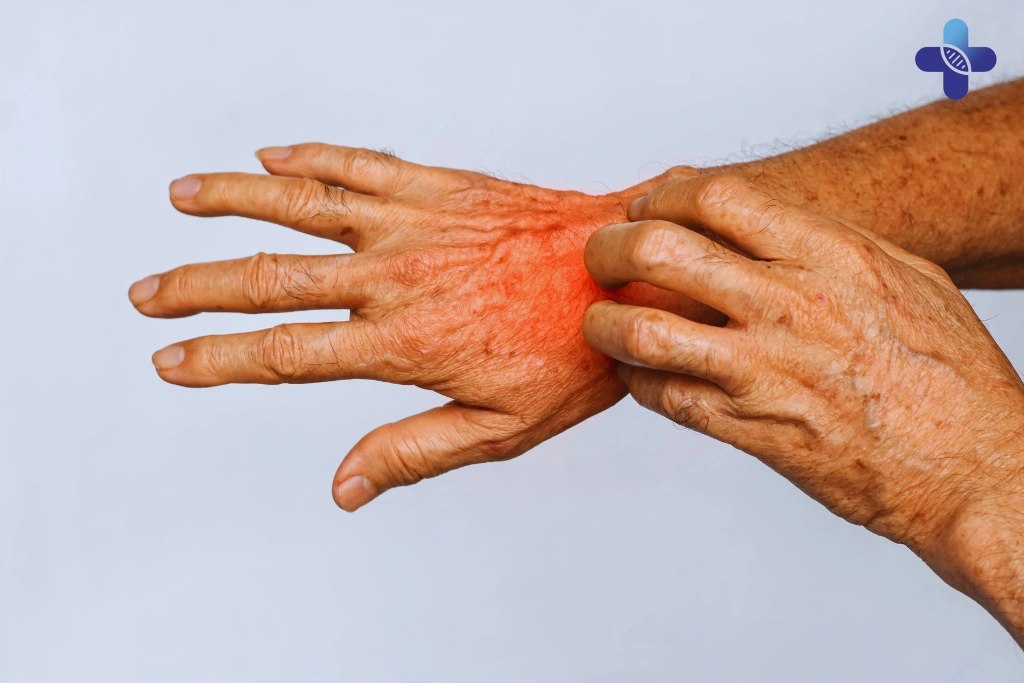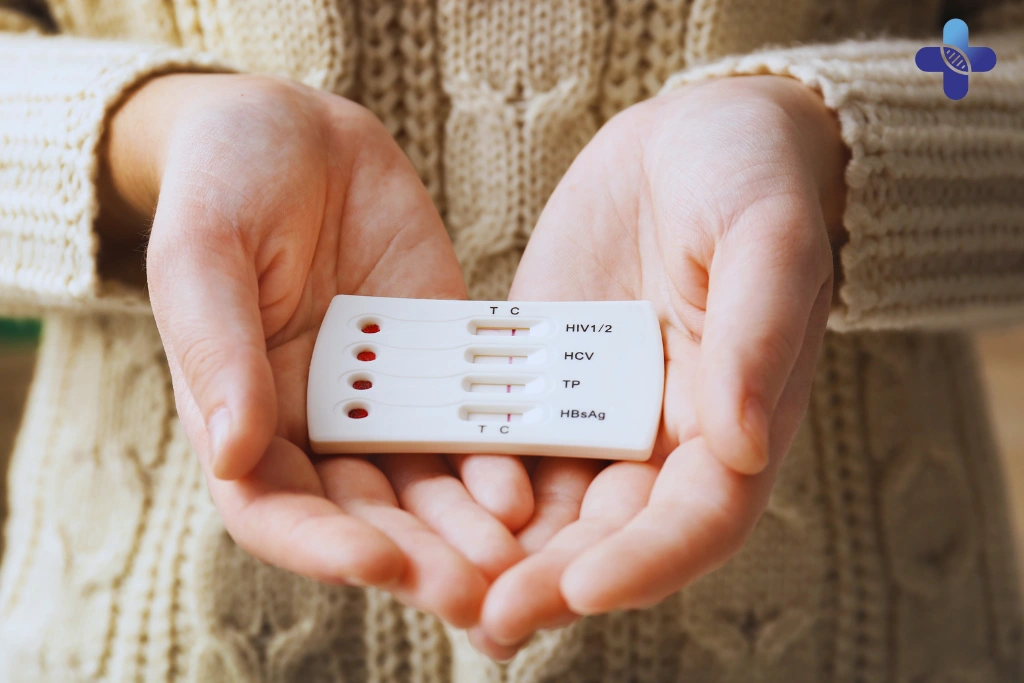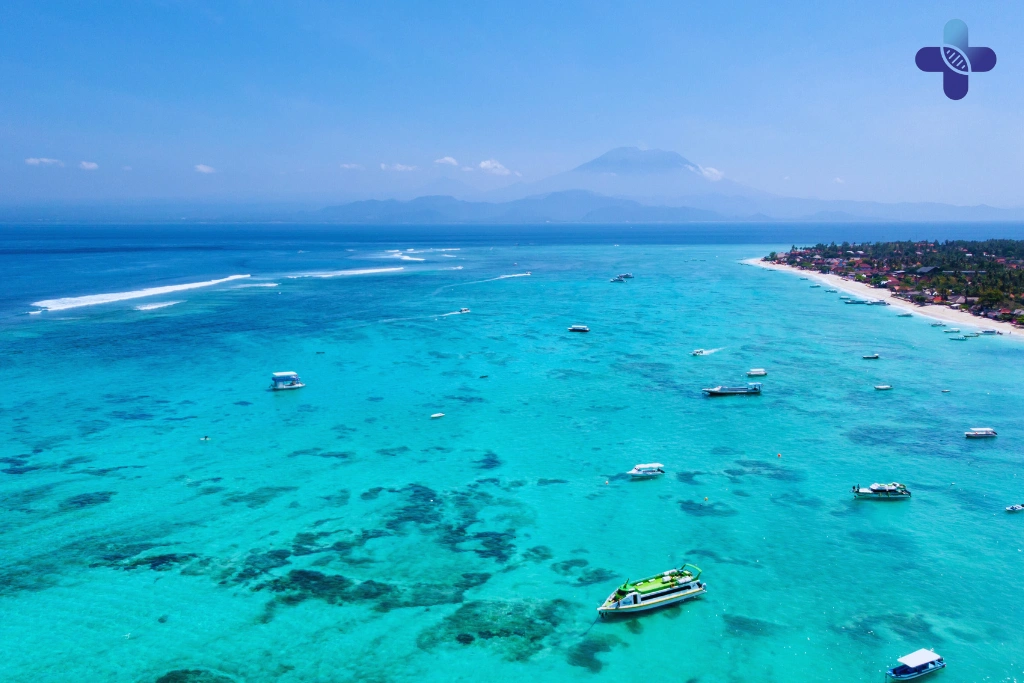Not all rashes are created equal—especially after a tropical getaway or unexpected romantic encounter in Bali. While many assume a rash is caused by sunburn, sweat, or insect bites, some skin irritations could be the first visible sign of a sexually transmitted disease (STD). In this article, we explore how to tell the difference between a harmless reaction and a potential infection. If you’re wondering whether your rash is something to worry about, especially in intimate areas, it’s time to learn what symptoms to watch for and when to seek professional help from a trusted medical clinic in Bali.

Is That Just a Rash or Something More? How to Tell if It’s an STD
Not all skin rashes should be taken lightly—especially after travel or intimacy in a tropical setting like Bali. While it’s common to blame skin irritation on heat, new soap, or insect bites, some rashes can actually be the first clue that your body is fighting off a sexually transmitted disease (STD) in bali. The tricky part is that early STD symptoms often mimic harmless conditions, making it easy to ignore what could be a serious health issue.
At Life Everyouth Clinic Bali, we regularly meet travelers who wait too long to address unusual rashes or skin discomfort—thinking it will go away on its own. In many cases, the rash is a visible sign of infections like syphilis, herpes, or chlamydia. Unlike heat rash or allergic reactions, STD-related rashes often persist, recur, or appear in sensitive areas that aren’t usually affected by weather or clothing.
This article will help you understand when a rash is worth worrying about and what symptoms to monitor closely. You’ll also learn how Life Everyouth Clinic can assist with discreet, accurate STD testing in Bali, including both rapid diagnostics and PCR-based panels. If you’ve noticed skin changes after a recent hookup or vacation, it’s better to act early and get peace of mind.
Understanding Genital or Skin Rashes Post-Travel
After a tropical trip, it’s common to notice changes in your skin—especially in areas that are warm, covered, or subject to friction. Factors like humidity, sweating, prolonged sun exposure, and tight travel clothing can all contribute to irritation. Add to that the use of unfamiliar toiletries or extended hours in swimwear, and you have a recipe for red, itchy, or inflamed skin. While most rashes caused by travel conditions resolve on their own, not all are harmless.
Bali’s climate, while beautiful, creates the perfect storm for misdiagnosis. The warm and humid environment encourages the growth of bacteria, fungi, and viruses—many of which can enter the body through microscopic breaks in the skin. Because tropical rashes often resemble early STD symptoms, it can be difficult to tell the difference between a simple heat rash and something more serious. Skin issues that develop after intimacy may be overlooked or wrongly attributed to sweat, allergies, or even shaving irritation.
That’s why it’s important to stay alert when symptoms persist beyond a few days or appear in intimate areas. At Life Everyouth Clinic Bali, we regularly help patients who come in thinking it’s just a reaction to the climate—only to discover an underlying infection. Whether you’ve had a new partner, experienced discomfort during travel, or noticed something unusual on your skin, a quick consultation and STD test can bring clarity, relief, and peace of mind.

Common STDs That Start With a Rash
Not all sexually transmitted diseases (STDs) begin with dramatic symptoms like pain or discharge. In fact, some of the most common STDs manifest subtly, starting with nothing more than a rash or small bump. These skin changes can appear days or weeks after exposure, and they often go unnoticed or misdiagnosed—especially in tropical environments like Bali, where heat rashes and allergies are also common. Understanding these early signs is crucial for timely treatment and protecting others.
Syphilis
Syphilis in bali is known as “the great imitator” because it can resemble many other skin conditions. The first stage often involves a single, painless sore (chancre) at the site of infection—typically the genitals, anus, or mouth. If untreated, the infection progresses to the secondary stage, where a reddish-brown rash may appear on the palms and soles, sometimes accompanied by fever or swollen lymph nodes. Because this rash doesn’t usually itch or hurt, many people ignore it—missing a key window for early treatment.
Herpes Simplex Virus (HSV)
Herpes in bali is one of the most commonly misunderstood STDs. It starts with itching, tingling, or burning in a localized area, followed by clusters of painful blisters. These blisters break open into shallow ulcers that eventually scab. While typically associated with the genitals or mouth, herpes lesions can occur on the buttocks, thighs, or hands due to skin-to-skin contact. Many mistake it for razor bumps or friction sores, delaying proper diagnosis and increasing the risk of transmission.
HIV (Human Immunodeficiency Virus)
Although HIV in bali is primarily known for weakening the immune system, it can also cause skin changes in its early stages. Some individuals develop a non-itchy, flat red rash as part of acute retroviral syndrome (ARS)—a flu-like illness that occurs within 2–4 weeks of infection. This rash may appear on the chest, back, or limbs and is often accompanied by fever, sore throat, and fatigue. Recognizing this stage is critical, as early detection improves long-term health outcomes and prevents further spread.
HPV (Human Papillomavirus)
HPV in bali doesn’t usually cause a rash in the typical sense, but it leads to genital warts—flesh-colored, cauliflower-like growths in intimate areas. These warts may be single or clustered, small or large, and appear on the penis, vulva, anus, or mouth. They’re often painless and may go unnoticed for months, making HPV one of the most silently spread STDs. Though some strains are low-risk, others are linked to cervical and anal cancers, highlighting the importance of early identification and vaccination.
Scabies & Pubic Lice (Parasitic but Sexually Transmitted)
Although not bacterial or viral, scabies and pubic lice are still considered sexually transmissible. Scabies is caused by tiny mites that burrow into the skin, triggering intense itching and a pimple-like rash, especially around the wrists, waist, thighs, or genitals. Pubic lice, also known as “crabs,” cause irritation and small red bumps in the groin or pubic hair area. Both conditions are highly contagious through close contact and can be easily mistaken for allergic reactions or hygiene issues.
STD vs Other Skin Conditions: Key Differences
Allergic Reactions: Red, Itchy, and Often Immediate
Allergic rashes occur when your skin reacts to substances like detergents, latex, body lotions, or even certain fabrics. These reactions typically result in hives—red, raised, and itchy welts that may appear within minutes to hours after contact. Allergic rashes are usually symmetrical and can occur anywhere on the body. The good news is, they often subside with antihistamines or by removing the irritant. However, unlike STD-related rashes, they rarely appear only in the genital area unless the allergen was directly applied there.
Heat Rash (Prickly Heat): Caused by Trapped Sweat
Prickly Heat rash bali, or miliaria, is extremely common in tropical destinations like Bali. It develops when sweat ducts become clogged, causing small red bumps or clear blisters, especially in areas like the back, chest, groin, or armpits. This type of rash is typically harmless, though it may be itchy or mildly uncomfortable. It improves with cool environments, loose clothing, and proper hygiene. However, if a rash persists, spreads to sensitive areas, or is accompanied by blisters or systemic symptoms, it may not be heat rash at all.
Insect Bites: Localized Irritation with a Visible Entry Point
Mosquitoes, sandflies, and ants are common in tropical areas and often leave small, swollen bites that itch intensely. These bites typically have a central puncture mark and are found on exposed skin such as arms, legs, or ankles. While uncomfortable, insect bites usually resolve within a few days and rarely appear in genital or anal areas—unless one was naked outdoors. If a rash appears in areas typically covered by clothing, lasts beyond a week, or begins to blister or spread, a more serious cause like an STD should be considered.
When Should You See a Doctor?
If you notice a rash that lingers, worsens, or appears in intimate areas after travel or sexual contact, it’s important not to dismiss it. Skin irritation that doesn’t improve within a few days—even without pain—could be the first sign of a sexually transmitted infection. Red flags include recurring sores, lesions that won’t heal, or skin changes combined with fatigue or swollen lymph nodes. These symptoms may seem minor, but they often indicate something deeper.
The sooner you act, the better the outcome. Early STD testing in Bali not only helps confirm or rule out an infection but also prevents long-term health complications and limits the risk of passing it to others. At Life Everyouth Bali, we offer confidential, judgment-free testing at both our Sanur and Jimbaran locations, with packages tailored to your needs—from basic to advanced panels. Whether you’re a resident, a long-stay guest, or a traveler, we make it easy to access discreet care.Can’t come to the clinic? Our Doctor On Call service brings medical consultation directly to your villa or hotel—ideal for those who want privacy, comfort, and speed. A licensed physician can assess your symptoms on-site and recommend whether you need STD testing or further lab diagnostics. In a place as fast-paced and unpredictable as Bali, having trusted medical support just a call away gives you both peace of mind and protection.

What to Expect During STD Testing at Life Everyouth Clinic
At Life Everyouth Clinic Bali, we understand how sensitive sexual health concerns can be—especially when you’re far from home. That’s why we offer a private, professional, and judgment-free environment with English-speaking medical staff who are trained to handle your concerns with care and clarity. Whether you’re dealing with a persistent rash, a recent sexual encounter, or simply want peace of mind, our team is here to support you every step of the way.
For skin-related STDs such as syphilis, herpes, HIV, and HPV, we recommend our Comprehensive STD Test Package, which includes testing for HIV, syphilis (VDRL & TPHA), herpes (IgM HSV-2), and hepatitis B. This package is designed for individuals experiencing rashes, sores, or systemic symptoms, and is priced at IDR 1,588,000 for KITAS/local patients and IDR 2,088,000 for non-KITAS visitors.
If you’re specifically concerned about chlamydia or gonorrhoea, particularly after noticing discharge or discomfort, the Essential STD Test Package offers PCR-based testing for both infections. It provides fast, accurate results and is available for IDR 1,488,000 (KITAS/local) and IDR 1,988,000 (non-KITAS). For a more advanced and complete evaluation, the Premium Intimate Care STD Test Package includes a full panel of viral and bacterial testing, including HIV, herpes, syphilis, hepatitis B, as well as chlamydia, gonorrhoea, mycoplasma, ureaplasma, and trichomonas. This package is priced at IDR 3,588,000 for KITAS/local and IDR 4,688,000 for non-KITAS.All testing is handled with strict confidentiality, and results are discussed thoroughly with you by our medical team.
Whether you’re a traveler, digital nomad, or expat living in Bali, Life Everyouth Bali ensures that STD testing in Bali is not only accessible—but accurate, empathetic, and respectful of your privacy.

Conclusion STD Rash or Something Else? Here’s When to Worry in Bali
Rashes may seem like a minor inconvenience, especially in a tropical setting like Bali, but they can also be the body’s first warning sign of a more serious condition—especially sexually transmitted diseases such as syphilis, herpes, or HIV. Recognizing the difference between a harmless irritation and an STD-related rash is essential, particularly when symptoms appear in intimate areas or persist despite basic care. The earlier you act, the better your chances of treating the issue effectively and protecting your long-term health.
At Life Everyouth Clinic Bali, we offer discreet and accurate STD testing in Bali through our comprehensive packages, tailored for travelers and long-stay guests. Whether you visit our clinics in Sanur or Jimbaran, or choose our Doctor On Call service for in-villa consultation, our goal is to provide accessible, confidential support whenever you need it. Don’t let uncertainty linger—if you’re unsure about a rash after your trip or encounter, let our trusted medical team help you find answers and peace of mind.
FAQ STD Rash or Something Else? Here’s When to Worry in Bali
Can an STD cause just a rash with no other symptoms?
Yes—certain STDs like syphilis and herpes can initially present as a rash without any pain, discharge, or other typical signs. These early symptoms are often mistaken for heat rash, insect bites, or allergic reactions, especially in a tropical place like Bali. A rash in the genital area, anus, mouth, or thighs—especially if it persists—should never be ignored. Prompt STD testing at a trusted medical clinic like Life Everyouth is essential to get an accurate diagnosis and start treatment early.
Is every rash in the genital area an STD?
Not always. Rashes in intimate areas may be caused by shaving, sweating, yeast infections, or contact dermatitis from new toiletries or fabrics. However, if the rash appears after sexual activity, doesn’t respond to basic skincare, or is accompanied by unusual sensations like tingling or burning, it’s time to seek a professional opinion. At Life Everyouth, we’ve seen many patients misdiagnose themselves—only to later find an active STD infection that required specific care.
How soon after contact can a rash appear?
The time between exposure and symptoms varies. Herpes can appear within 2–12 days, syphilis often develops within 10–90 days, and some viral infections like HIV may cause a rash 2–6 weeks after transmission. Keep in mind that rashes may be your body’s only signal in the early phase, even before you feel ill. If you’re unsure about timing, our doctors at Life Everyouth can guide you through when and what tests are appropriate based on your exposure window.
Can I get an STD rash even if I used protection?
Yes, it’s possible. Condoms reduce the risk significantly but don’t eliminate all exposure—especially for infections like herpes, syphilis, or HPV that spread through skin-to-skin contact beyond areas covered by a condom. Even if you’ve been careful, it’s smart to get tested when symptoms appear. Life Everyouth Clinic Bali offers confidential consultations to help you assess your risk and decide on the best testing package for your case.
What should I do if the rash doesn’t go away?
If the rash persists for more than a few days, spreads, or changes in appearance, don’t wait. Chronic or recurring rashes in the genital region can be signs of herpes outbreaks, secondary syphilis, or fungal infections that require medical treatment. Left untreated, these conditions may worsen or lead to complications. At Life Everyouth, we can examine your symptoms and provide STD testing in Bali that gives clarity without judgment.
Is it safe to wait and see if the rash clears up?
Waiting it out might feel easier—but it can be a risky choice. Some STDs are asymptomatic in the beginning and only show mild signs like a rash. But underneath, the infection could be progressing to a more severe stage that’s harder to treat. Getting tested early at Life Everyouth not only protects you but also prevents the unintentional spread to others.
Where can I get tested for rashes in Bali?
You can visit Life Everyouth Clinic in Sanur or Jimbaran for walk-in or scheduled STD testing. Our English-speaking staff ensure every visit is smooth and private. If you’re staying at a resort or villa and prefer to be seen in comfort, our Doctor On Call service brings care to your door. Whether you’re here short-term or staying longer, we’re a trusted name for STD testing in Bali.
How much does STD testing cost in Bali?
Our STD testing packages start at IDR 800,000 for a Basic HIV screening, and go up to IDR 4,688,000 for a Premium Intimate Care Package that includes full-panel testing (HIV, herpes, syphilis, chlamydia, gonorrhoea, HPV, mycoplasma, and more). We offer both rapid and PCR-based diagnostics. Prices vary for KITAS holders and non-KITAS guests, and our team can help you choose a package that fits your concerns, exposure risk, and budget.
Is the testing private and confidential?
Absolutely. At Life Everyouth Clinic Bali, your privacy is our top priority. All consultations, test results, and medical records are handled with full discretion and professionalism. Whether you’re traveling alone, with a partner, or on a digital nomad visa, you can trust that your health concerns stay between you and your doctor.
What if I feel embarrassed about my symptoms?
Feeling embarrassed is completely normal, but you’re not alone—many travelers experience similar symptoms and fears. Our team is trained to offer supportive, nonjudgmental care, no matter your concern or background. The goal is not to shame, but to support your health and peace of mind. Talking openly is the first step to feeling better, and at Life Everyouth, we’re here to help you move forward confidently.
